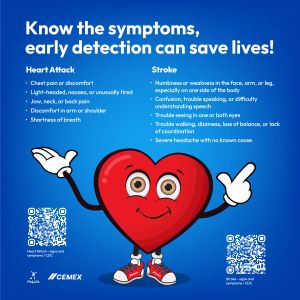When it comes to heart attacks and strokes, every second counts. Recognising the early symptoms can make a significant difference in outcomes, potentially saving lives and reducing long-term damage.
According to the Centres for Disease Control and Prevention (CDC), heart attacks often present chest pain or discomfort, shortness of breath, and pain in the jaw, neck, or back. These symptoms can be subtle, so it’s crucial to pay attention to your body and seek immediate medical help if you notice anything unusual.
Strokes, on the other hand, have their own set of warning signs. The CDC emphasises the importance of the F.A.S.T. method: Face drooping, Arm weakness, Speech difficulty, and Time to call for emergency support. Sudden numbness, confusion, trouble seeing, and severe headaches are also common indicators. Acting quickly can significantly improve the chances of recovery, as treatments are most effective within the first few hours of symptom onset.
Understanding these symptoms and responding promptly can prevent severe health complications. Whether it’s a heart attack or a stroke, early intervention is key. Educating yourself and others about these warning signs is very important. Remember, it’s always better to be cautious and seek medical attention if you’re unsure.
